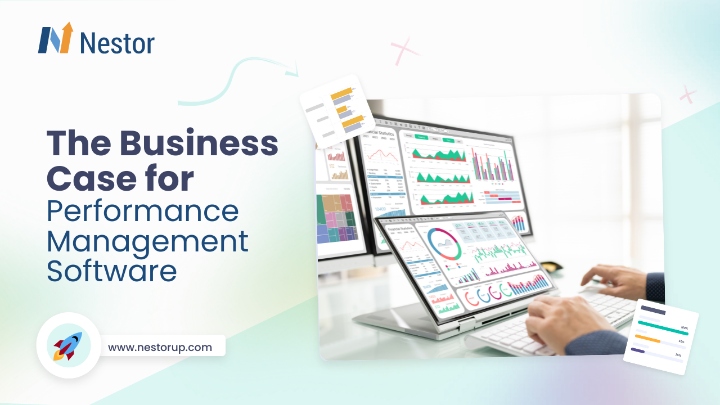Organizational Agility: How Successful Companies Embrace Change
9 min read

In a business world where change and uncertainty are the new norm, organizational agility is quickly becoming a game-changer for companies seeking to remain competitive and relevant in the long run. And the numbers back it up! According to data from McKinsey, successful agile transformation can lead to:
- 30% increase in customer satisfaction
- 30% improvement in operational performance
- 5-10x increase in speed in driving change and decision-making
- 30% increase in employee engagement
- 30% efficiency gains
In this article, we look at what organizational agility really is and explore its ever-increasing importance. We also dive into how it empowers companies to adapt, innovate, and thrive while also looking at some of the ways leaders can promote and support workforce and organizational agility. Let’s dive right in!
What is organizational agility?
Organizational agility is the ability to adapt, respond, and find success in a rapidly changing and unpredictable business landscape. This ability is what allows leaders and HR to quickly and effectively adjust their strategies, processes, and structures. And, in turn, the organization ends up in a much better position to capitalize on emerging opportunities or overcome challenges.
By its nature, organizational agility relies on speed — the speed to understand markets and customers, the speed to come up with innovative solutions, the speed to identify what works and what doesn’t, etc.
However, and perhaps counterintuitively, stability is also an indispensable element of agility. It represents the foundation or starting point — the things that do not change within a company, without which dynamic changes and responsiveness would simply not be possible.
Another key element of organizational agility is experimentation, or the capability to come up with fast iterations, extract insights, and apply them in the next version or solution. The success of experimentation relies on a growth mindset and embracing disruption. Changes, especially unexpected or undesired ones, should be regarded as opportunities to reinvent processes or ways to do work and test the resilience of your workforce.
Organizational agility is also fueled by workforce agility. When employees are more adaptable and collaborative, the organization can respond faster to dynamic changes are grow in a sustainable manner. Learn more about workforce agility.
Why is organizational agility important?
Organizational agility plays a critical role in the success and sustainability of organizations — which is more true now than ever, given global economic shifts, technological advancements, and changing customer preferences.
And while the benefits of embracing an agile business strategy are numerous, here are some that stand out:
Overall revenue increase
The highly competitive business world means that being the first to (re) act on new trends or innovative technologies is what often separates you from competitors. If you don’t believe us, just look at the impact of late market reactions on companies like Blackberry and Blockbusters.
Being nimble and providing products or services faster will not only lead to higher revenue growth, it can also establish your company as a leader in a new market segment.
Samsung is an excellent example here, who has been at the forefront of foldable smartphones and is (at least for the time being) the leader in this relatively new smartphone category.
Increased adaptability to change
Both in life and in business, change is inevitable, and companies that are (proactively) prepared are better equipped to survive and thrive.
Embracing agility across the entire organization is what will give you and your employees a better chance of successfully responding to new trends. In time, agility will even enable you to anticipate changes based on past developments and be prepared early on.
Higher innovation and creativity
We’ve already established that experimentation is a key element of organizational agility. And when employees feel encouraged and empowered to take risks and try new ideas, it inevitably creates a culture of free-flowing creativity, which can lead to improved processes, better business results, and sometimes even industry breakthroughs.
Improved decision making
By minimizing hierarchy and bureaucracy and embracing a more decentralized approach to decision-making, agile organizations can nurture more autonomous and self-directed teams, which make quicker and more informed decisions. As a result, ideas and initiatives are executed faster and the overall organizational efficiency is enhanced.
How can agility improve organizational efficiency and effectiveness?
When implemented correctly, organizational agility has the power to radically improve the performance and health of a company. To better understand how, we’ll look at some of the most important practices associated with agility, based on insights from McKinsey:
- Role clarity: This practice is directly related to the stability aspect or organizational agility. When employees have a clear understanding of their roles and responsibilities, they can make informed decisions and act swiftly, even when responding to changing circumstances or taking ownership beyond their position.
- Meaningful values: Presenting values that resonate with employees is crucial, especially when uncertainty hits. In these moments, having a shared sense of purpose is what will make individuals more willing to embrace change, experiment, and even take (calculated) risks.
- Knowledge sharing: Creating a culture that allows the flow of information, expertise, and insights across the organization will accelerate the learning process and encourage employees to freely collaborate and take advantage of cross-departmental insights and resources.
- Inspirational leaders: It’s natural for people to look up to leadership and follow them. That’s why agile organizations nurture passionate and charismatic leaders, who demonstrate resilience and embrace continuous learning — leading by example and inspiring their peers in the process.
- Performance reviews: Traditional annual performance reviews simply do not align with agile principles. They are too focused on past achievements and don’t take place regularly enough. Continuous feedback and performance conversations are the way forward, as they allow timely recognition and quick alignment or realignment of goals as business needs evolve.
Respondents rate business agility maturity significantly higher when it is sponsored by the Board of Directors or C-Suite, compared to those led by a Line of Business leader. In other words, transformations do better when they are led from the top.
— Business Agility Report
How can leaders promote agility?
Adopting agility isn’t something that happens overnight. It is a process that will take time, but HR and business leaders can already start taking the first steps in that direction:
Embrace skills-based approaches
Skills and organizational agility go hand in hand. In fact, through skills-based approaches, companies can redefine how they see and assign work. Instead of thinking in terms of ‘jobs’ and ‘capabilities’, leaders:
- look at the tasks that need to be accomplished
- identify the employees who have the right skills for these tasks
- and see who else would benefit or learn from being part of the flexible team that will undertake a specific project
To achieve this, business and HR leaders need to have a clear overview of current and missing skills (skill gaps) and align them with short- and long-term business goals. One of the best ways to address skill gaps is by leveraging internal development opportunities through a talent marketplace, which matches employees with the best-fit growth initiatives.
Nurture cross-functional teams
Cross-functional teams represent an effective way of promoting agility by bringing together employees from different departments and professional backgrounds. This approach brings down silos and encourages interdisciplinary and free-flowing cooperation.
It’s a way of sharing both talent and knowledge, helping your talent develop a deeper understanding of how their work as well as the work of their peers contributes to the larger business objectives.
Internal mobility can be an excellent initiative in this direction, which not only allows you to fill critical roles or respond to changes in business needs but also acts as a response to people’s desire to try out new opportunities and challenge themselves.
Learn more about internal mobility and its benefits.
Adopt a growth mindset
Leaders with a growth mindset believe that abilities and expertise can be developed through dedication and hard work, inspiring employees to embrace challenges and view failures as opportunities for growth.
This isn’t always an easy process, since some employees can still be limited by a fixed mindset developed as part of their traditional education, which usually views mistakes and failures in a negative light.
Agile organizations should strive to foster a learning-oriented culture, in which employees are more willing to experiment, innovate, and feel safe knowing that their leaders have their back.
In doing so, not only will you strengthen the capabilities of your workforce but you’ll also improve the organization’s ability to respond to new challenges and keep on evolving.
Frequently Asked Questions (FAQs) about organizational agility
Why is organizational agility important?
Organizational agility is important because it’s one of the keys to remaining competitive and sustainable in the current business world. Agility is what enables companies to take charge of change management and find innovative ways to make the most out of unforeseen events, market trends, or shifts in (customer) expectations.
What are the pillars of organizational agility?
What people refer to as “pillars of organizational agility” are, in fact, the principles of agility applied to some (or across the entire) business areas.
For example, workforce agility or having agile teams of individuals is a pillar of organizational agility. Another is embracing emerging work styles or redesigning your company culture around the concept of flexibility.
Agility at the leadership level is perhaps one the most important pillars since people in these positions will inspire others to adopt and promote this new approach.
How do you bring agility to an organization?
Bringing agility to an organization starts with the buy-in from critical stakeholders, like C-level executives, HR, and department heads.
Once convinced by the benefits of this approach, the next steps are to identify the best-suited agile methodologies and tools and adopt them together with the principles of an agile mindset across the organization.
The process can start initially at a smaller level, let’s say a team or department, and scale up gradually.
Final thoughts
Organizational agility is quickly transforming from an advantage into a necessity in our unpredictable business world. And companies that embrace it will be the ones to develop the necessary resilience to make the most of emerging opportunities and market shifts.
At Nestor, we also believe in the power of agility and use skills as a single source of truth to help organizations drive workforce readiness, high performance, and continuous growth. How?
By connecting performance management, employee engagement, and career development through a skills-based approach, we help HR and business leaders make talent decisions aligned with the changing business needs.
To learn more about how we can help you become an agile organization, schedule a free demo.










